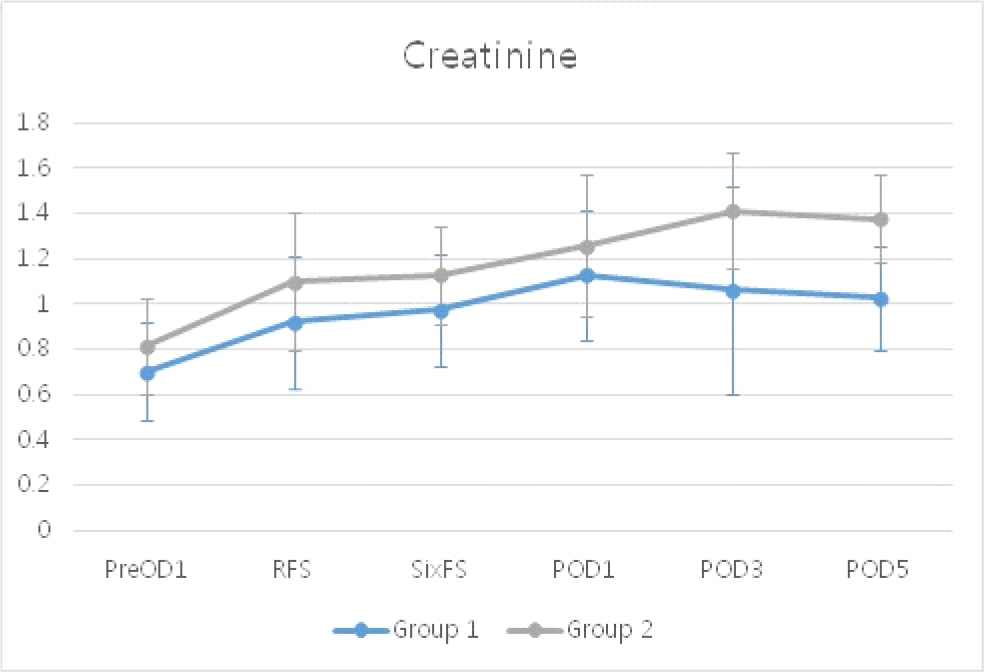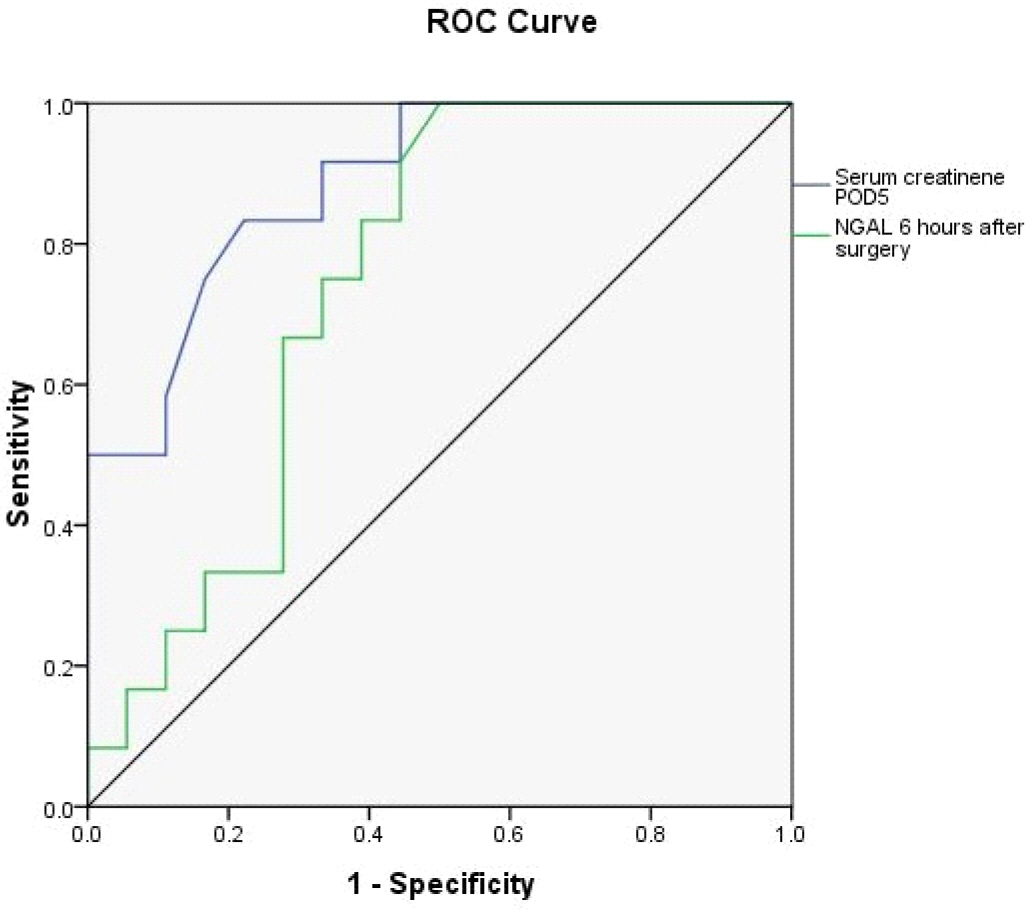Clinical significance of serum neutrophil gelatinase-associated lipocalin in the early diagnosis of renal function deterioration after radical nephrectomy
Article information
Abstract
Objectives
The standard metrics used to monitor the progression of acute kidney injury (AKI) include markers such as serum creatinine, blood urea nitrogen, and estimated glomerular filtration rate (eGFR). Moreover, neutrophil gelatinase-associated lipocalin (NGAL) expression has been reported to modulate oxidative stress.
Methods
We aimed to evaluate the usefulness of serum NGAL levels for monitoring renal function after radical nephrectomy (RN). We prospectively collected data from 30 patients who underwent RN. We analyzed serum NGAL and creatinine at 6 time points: preoperative day 1, right after surgery, 6 hours after surgery, postoperative day (POD) 1, POD 3, and POD 5. We compared these measurements according to the eGFR values (classified as chronic kidney disease stage III; CKD III or not) using data obtained 3 months after surgery.
Results
The mean age was 65.5 years (range, 45–77 years), and the male-to-female ratio was 2:1. At the last follow-up examination, there were 12 patients (40%) with CKD III. Using receiver operating characteristic analysis, we found that serum creatinine on POD 5 (area under the curve [AUC], 0.887; P = 0.000) and NGAL at 6 hours after LRN (AUC, 0.743, P = 0.026) were significant predictors of CKD III. The development of CKD III after LRN was associated with the serum creatinine level on POD 5 and the NGAL at 6 hours after surgery.
Conclusions
Compared to serum creatinine, serum NGAL enabled earlier prediction of postoperative CKD III. Therefore, serum NGAL measured 6 hours after surgery could be a useful marker for managing patients after RN.

Serum creatinine levels in CKD III and non-CKD III groups. Patients were grouped into 2 groups according to the eGFR values; the patients with eGFR equal to or higher than 60 mL/min/1.73 m2 were grouped into group 1 and those with eGFR lower than 60 mL/min/1.73 m2 were grouped into group 2, respectively. Abbreviations: PreOD, preoperative day; RFS, right after surgery; SixFS, 6 hours after surgery, POD, postoperative.

NGAL levels in CKD III and non-CKD III groups. Patients were grouped into 2 groups according to the eGFR values; the patients with eGFR equal to or higher than 60 mL/min/1.73 m2 were grouped into group 1 and those with eGFR lower than 60 mL/min/1.73 m2 were grouped into group 2, respectively. Abbreviations: PreOD, preoperative day; RFS, right after surgery; SixFS, 6 hours after surgery, POD, postoperative day.

Receiver operating characteristic analysis of serum creatinine and NGAL. Abbreviations: POD, postoperative day.


